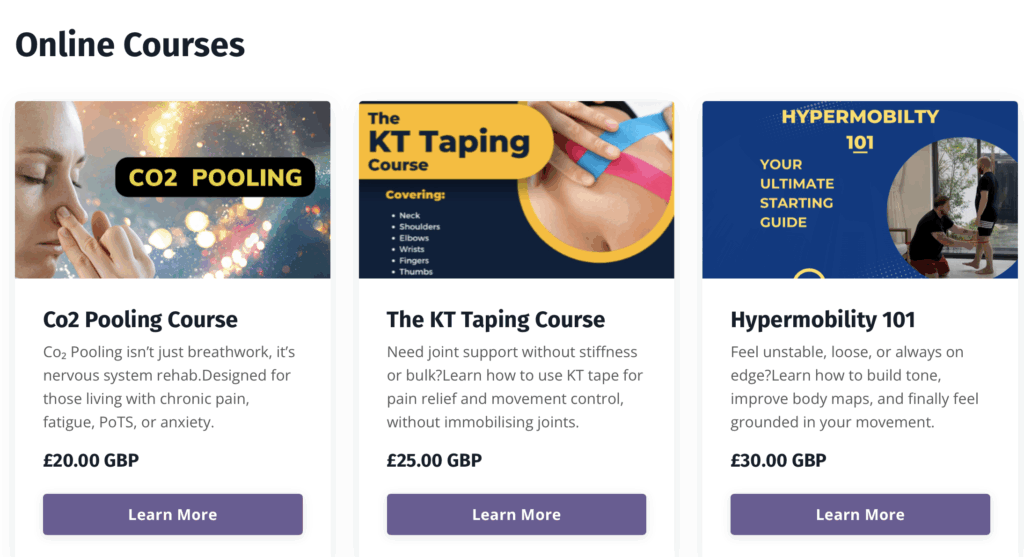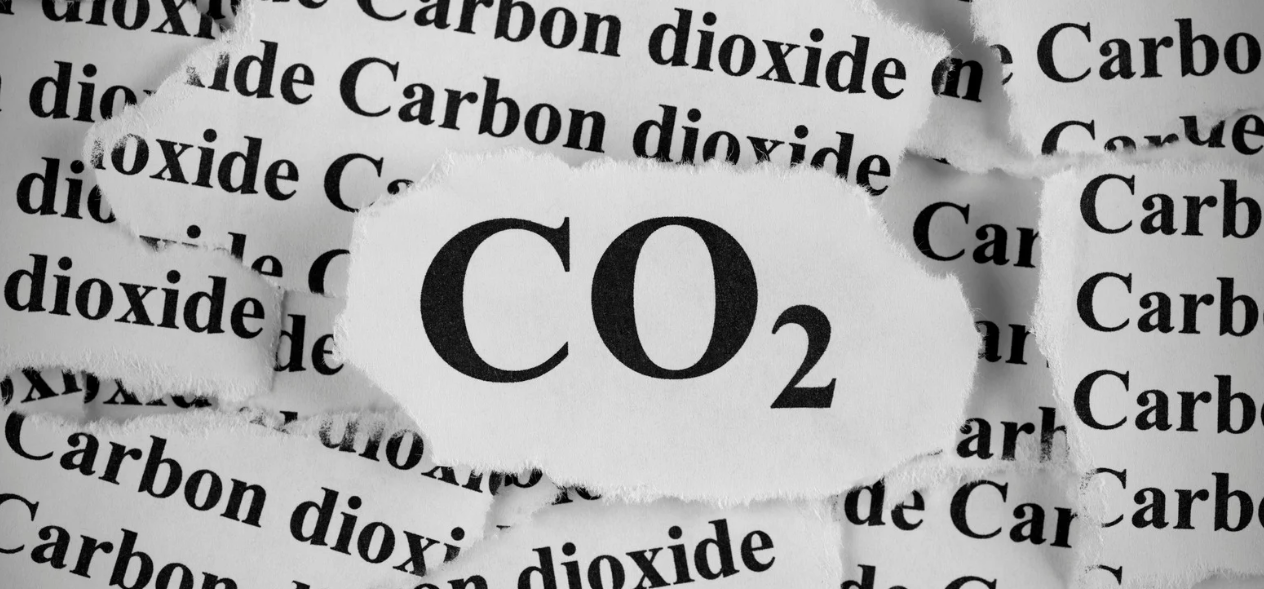- POTS and Exercise: The First Step Everyone Misses - 27 June 2025
- The Missing Link Between Breathlessness, Fatigue, and Chronic Pain: Understanding CO₂ Tolerance - 19 June 2025
- What is Mast Cell Activation Syndrome? - 12 May 2025
If you’ve been living with chronic pain, relentless fatigue, or that strange feeling of being both wired and tired at the same time, then chances are, you’ve already tried everything under the sun in search of relief. The supplements, the pacing strategies, the stretching routines, the endless body scans and breathing apps.
And yet, despite all of your best efforts, something still feels off, your body still feels heavy, your energy never quite replenishes, and there’s this persistent sense that something deeper is driving it all. Perhaps you notice chest tightness that seems to appear for no reason, or you catch yourself breathing rapidly, even while sitting still. Perhaps you’ve had dizzy spells when standing up, or felt anxiety come crashing in, even on days that started out okay.
It’s completely understandable to feel lost, or like no one has really given you a clear answer. Especially when all your tests come back fine, and you’re told that everything looks normal, when it doesn’t feel normal at all.
What many people don’t realise, and what often gets overlooked in traditional approaches to rehab, is that the way we breathe, and more specifically, the levels of carbon dioxide in our system, can have a huge impact on how we feel from day to day.
Now, I know carbon dioxide probably isn’t something you’ve spent much time thinking about, truth is most of us have grown up believing that CO₂ is just a waste product, something our body needs to get rid of. But that belief is not only outdated, it’s also one of the biggest reasons why so many people stay stuck in cycles of pain, fatigue, and nervous system overload. Fun fact, when we breathe out, we actually breathe out more oxygen that co2!
In reality, CO₂ plays a crucial role in helping our cells receive oxygen, in calming our stress response, and in helping the brain process pain in a more regulated way. So, when we don’t have enough of it, due to something as simple as over-breathing or long-standing tension patterns, the body responds with symptoms that look an awful lot like chronic illness.
In this blog, I want to explore this topic with you in a bit more detail, we’ll look at what CO₂ tolerance actually means, why it matters more than most people think, and how it connects to conditions like hypermobility, ME/CFS, and POTS, But more importantly, I want to show you that there’s something you can do about it. Because this isn’t just another theory or passing trend. This is about learning how to work with your body, not against it. If you had told me just 20 years ago, that I would be a huge advocate of breathing (and by that I means Co2 pooling, not meditation breathing) I wouldn’t have believed you. Co2 pooling has gave me so many benefits over the years, from getting my sleep latency (how long it takes to fall asleep) down to 4 minutes, making my neck muscles more tolerant to stress, including insane hypermobile sleeping positions, and giving me more energy.
This article covers:
ToggleWhat Is CO₂ Tolerance, and Why It’s Crucial
When we talk about breathing, most people assume it’s all about oxygen. We breathe in, our lungs fill up, and oxygen gets delivered around the body. That part is true, but it’s really only half the story, because what actually allows oxygen to be released into your cells and used effectively is something called carbon dioxide.
CO₂ tolerance refers to how well your body can handle rising levels of carbon dioxide in the blood before it triggers that urgent need to breathe. The lower your tolerance, the more likely you are to over breathe, often without realising it. The higher your tolerance, the more stable your breathing becomes, the less you need to breathe and the more control your nervous system has during everyday life.
This is one of those things that seems small on the surface, but can have a profound ripple effect throughout the entire body. Low CO₂ tolerance is something we commonly see in our clients with hypermobility, EDS, and Fibromyalgia, due to autonomic dysfunction. Low Co2 creates a state where the body is constantly on high alert, where the brain is primed for survival and the smallest stressor can feel overwhelming.
The science behind this is actually quite simple. As carbon dioxide levels drop too low, oxygen becomes harder for the body to use. This is known as the Bohr effect. Without enough CO₂ in the system, haemoglobin holds onto oxygen more tightly. So even though you’re breathing in oxygen, it doesn’t make its way into your tissues as easily. It’s a bit like having money in the bank that you can’t access when you need it most. This can be a big issue if you a desk job, as the muscles needed to hold your posture, just simply don’t get the oxygen needed to do the job. This is why a lot of people with low Co2, like hypermobile folks with POTs, generally have issues with coat hanger pain, As well as why those with POTS struggle to exercise.
When someone has low CO₂ tolerance, their brain becomes highly sensitive to even small increases in carbon dioxide. That means breath-holding, physical exertion, or even emotional stress can trigger uncomfortable symptoms like lightheadedness, air hunger, or palpitations. And over time, this kind of reactive breathing behaviour reinforces the very patterns that keep the nervous system stuck in a stress loop.
The good news is that CO₂ tolerance is not fixed. It can be improved through gentle, intentional training that allows your body to become more comfortable with higher levels of carbon dioxide. This doesn’t mean pushing or forcing your way through breath holds or uncomfortable practices. Instead, it means gradually creating space for the body to feel safe while CO₂ levels rise slightly, which in turn helps regulate oxygen use, calm the nervous system, and restore a sense of balance.
Understanding your own tolerance can be the first step toward changing how your body feels on a daily basis. Because the way you breathe isn’t just a background process. It’s one of the most powerful tools you have for shifting how your body functions, how you handle stress, and how you experience pain.
The Bohr Effect and Oxygen Delivery
At first glance, it makes perfect sense to assume that the more we breathe, the more oxygen we provide to our bodies. It feels intuitive. After all, oxygen is essential for everything from producing energy to managing pain, thinking clearly, and keeping our organs functioning properly. But the relationship between oxygen and breathing is not as straightforward as many people believe.
The body does not just rely on how much oxygen we take in. It also depends on how efficiently that oxygen is delivered to the places that need it most. This is where carbon dioxide becomes critically important, and this is where the Bohr effect begins to change the conversation.
The Bohr effect is a physiological mechanism that explains how carbon dioxide levels help determine how easily oxygen is released from the blood into the tissues. When there is a healthy amount of CO₂ present, oxygen is released more freely from haemoglobin and can enter the muscles, brain, and other vital areas. This process allows for efficient oxygen delivery, especially during times of increased demand such as exercise, healing, or emotional stress.
However, when CO₂ levels drop too low, oxygen tends to stay bound to haemoglobin. As a result, it circulates through the bloodstream without ever reaching the areas that need it most. This means that even though someone might be breathing plenty of oxygen, it is not being delivered where it is actually required. The body, quite literally, cannot access the resources it already has.
This helps explain why people with low CO₂ tolerance can feel exhausted, breathless, or lightheaded despite breathing more than enough. It is not that the oxygen is missing, but rather that it is not being made available to the tissues due to an underlying imbalance in carbon dioxide.
If you have ever felt worse after deep breathing or noticed that certain relaxation exercises leave you feeling anxious or dizzy, this mechanism may be behind it. Too much breathing can lead to too little CO₂, which in turn restricts oxygen delivery, reduces brain perfusion, and leaves the nervous system even more dysregulated, evident in a lot of chronic pain sufferers heart rate variability being on the low side.
Once we begin to understand the Bohr effect, everything starts to make more sense. It becomes clear that supporting carbon dioxide levels is not about reducing oxygen but about improving how oxygen is used throughout the body. It is about restoring a more functional and responsive internal environment, where breathing serves not just as a life-sustaining rhythm but as a deeply influential tool for healing and regulation.
When we restore healthy CO₂ levels, we are not just changing our chemistry. We are creating the conditions for better focus, calmer energy, and a body that can respond to life’s demands with greater resilience and ease.
Hypocapnia, Anxiety, and Chronic Pain
When someone has been living with persistent symptoms for a long time, whether that is chronic pain, fatigue, dizziness, or anxiety, it is easy to fall into the belief that these things are separate or unrelated. But beneath the surface, there is often a common thread running through them, and that thread is the way the body handles carbon dioxide.
Hypocapnia refers to a state where carbon dioxide levels in the blood drop too low. This usually happens as a result of over-breathing, either through fast breathing, deep breathing, or simply breathing more than the body needs. And while it might seem like an insignificant shift, hypocapnia can have powerful effects on both the body and the brain.
When CO₂ levels drop, the blood becomes more alkaline. This change in pH can cause a range of symptoms, from muscle cramps and pins and needles to dizziness and a racing heart. More importantly, it alters the way the brain functions. Blood vessels constrict, reducing blood flow to key areas, including those responsible for emotional regulation and pain processing.
Research has shown that during episodes of hypocapnia, there is a noticeable drop in activity in areas like the somatosensory cortex and the insular cortex, two regions heavily involved in how we perceive pain. This means that not only does the body become more reactive, but the brain also becomes less able to interpret and modulate pain in a balanced way.
It is a double hit. The nervous system becomes more excitable, while the brain becomes less effective at managing that excitability. Over time, this creates a feedback loop. Pain leads to stress, stress leads to altered breathing, altered breathing leads to hypocapnia, and hypocapnia feeds right back into the experience of pain. This is something we see often with clients who come to us after years of living with symptoms that no one could quite piece together. Many have tried therapy, medications, physiotherapy, and yet their symptoms keep looping. Once we start looking at breathing and CO₂ tolerance, a very different picture begins to emerge.
It is not that their pain is imagined or that their stress is causing everything. It is that their breathing patterns, often shaped by years of tension, trauma, and infections are quietly influencing how their body functions. And without addressing that piece, true recovery can feel like a constant uphill battle.
The good news is that this loop can be broken. By gently restoring carbon dioxide levels and helping the body relearn safer, more efficient breathing patterns, it becomes possible to calm the nervous system, reduce symptoms, and start to feel like yourself again. This process does not require pushing through discomfort or chasing quick fixes. It requires patience, safety, and a willingness to explore a part of your physiology that is often overlooked.
And for many people, that is where everything begins to shift.
CO₂ Tolerance in Chronic Illness: EDS, POTS, and ME/CFS
If you live with a condition like Ehlers-Danlos Syndrome, Postural Orthostatic Tachycardia Syndrome, or ME/CFS, then you probably already know how difficult it can be to feel understood by healthcare professionals. The symptoms are wide-ranging, the fatigue is relentless, and the explanations you are given often feel incomplete. But when we start looking at how carbon dioxide tolerance affects the body, a new layer of understanding begins to take shape.
For those with EDS and hypermobility, breathing often feels more difficult than it should. Many people report shortness of breath, chest tightness, or the feeling of not being able to get a deep breath. It is easy to assume this is just anxiety or poor posture, but the issue runs deeper than that. The connective tissue in the ribcage, diaphragm, and lungs is often too lax, which makes it harder to maintain stability during breathing. As a result, many people end up over-breathing just to feel like they are getting enough air.
Over time, this breathing pattern can reduce CO₂ levels in the blood and increase the body’s sensitivity to carbon dioxide. This leads to symptoms like air hunger, dizziness, or even sudden fatigue, and creates the kind of unstable internal environment that makes everything feel harder. Research has shown that people with hypermobile EDS have impaired lung volume perception and erratic breathing responses to cognitive stress, which supports what many already feel intuitively, their breathing system is just not behaving the way it should.
In POTS, breathing dysfunction is also incredibly common. Around 80 to 90 percent of people with POTS have been shown to have some form of breathing pattern disorder, whether that is hyperventilation, upper chest breathing, or shallow nasal inhalation. And when CO₂ levels drop in these individuals, studies have found that heart rate increases dramatically, while stroke volume drops. This combination leads to poor circulation, lightheadedness, and that crushing fatigue that makes even small tasks feel enormous.
What is particularly important to understand here is that in many POTS patients, the increased heart rate is not just a result of standing up or being upright. It is also driven by the way breathing impacts blood chemistry and nervous system balance. In these cases, retraining the breathing system and restoring CO₂ tolerance can make a meaningful difference in symptoms, and in some cases, reduce the need for more invasive interventions.
Then there is ME/CFS, a condition marked by deep fatigue, post-exertional malaise, and a range of often misunderstood symptoms. One study looking at breathing patterns in people with ME/CFS found that the majority of patients were in a state of hypocapnia, even though they were not breathing rapidly. This suggests the issue is not just fast breathing, but deep or excessive breathing that lowers CO₂ and alters pH balance. There is even a hypothesis that changes in carbonic anhydrase activity, an enzyme that helps manage CO₂ and pH—could be contributing to these patterns in people with ME/CFS.
For all of these conditions, the theme is the same. The body is working overtime to maintain balance, but the breathing system is often running on outdated software. It responds too aggressively to small shifts in carbon dioxide, leading to symptoms that feel like anxiety, fatigue, weakness, or breathlessness, even when nothing obvious is happening.
What this means is that for many people, improving CO₂ tolerance is not just about breathing more efficiently. It is about changing the body’s relationship with its internal environment. It is about helping the nervous system feel safe again, so it no longer has to live in a constant state of alarm.
And when that shift begins, even the most stubborn symptoms can start to soften.
How CO₂ Tolerance Is Measured, and Why It Matters
Understanding that carbon dioxide plays a central role in how the body feels is one thing, but being able to measure your own tolerance is what really helps bring that understanding to life. It makes the invisible visible, and it gives you something concrete to work with. And for many people, that can be incredibly validating.
One of the most common and simple ways to assess CO₂ tolerance is through a breath-hold test. It does not require any fancy equipment or clinical supervision. All it takes is a quiet moment and a little self-awareness.
The typical protocol is straightforward. You begin by sitting comfortably and breathing normally for a minute or two. Then you take two gentle, quiet breaths through your nose and, after your second exhale, you hold your breath. You are not holding until you cannot bear it any longer. You are simply holding until you feel the first clear urge to breathe or any small shift in your body that tells you it is time to stop. That might be a twitch in your diaphragm, a swallow, or just a subtle discomfort that breaks the stillness.
Your time is then measured in seconds. A breath hold of less than ten seconds usually indicates very poor tolerance. Ten to twenty seconds is still considered low. Twenty to forty seconds is the range where some people begin to function a little better, but there is often still room for improvement. If you can hold for forty to sixty seconds, you are doing well.
What makes this test so useful is not just the number you get, but what it tells you about your nervous system. A short hold time often means the brain is highly sensitive to carbon dioxide. It overreacts to small rises in CO₂, pushing you to breathe too soon and keeping the body stuck in patterns of over-breathing. A longer hold time means the system is more tolerant and stable, allowing for more efficient oxygen delivery and calmer day-to-day functioning.
There are also other ways to assess breathing patterns and related symptoms. Tools like the Nijmegen Questionnaire are used to identify signs of hyperventilation and dysfunctional breathing, such as air hunger, lightheadedness, tingling, or chest tightness. Capnography, which measures the amount of CO₂ in exhaled air, can provide a more detailed picture of how someone breathes throughout the day., But even without advanced testing, small self-assessments like the breath-hold test can offer important clues. They give you a snapshot of where you are now, and they help track progress as you begin to retrain your breathing patterns and support your system.
Knowing your own CO₂ tolerance can be the first step in breaking the cycle of fatigue, anxiety, and pain. It turns something abstract into something measurable. And when you know where you are starting from, it becomes easier to know where to go next.

Retraining Your CO₂ Tolerance: What Works
The idea of retraining your breathing might sound a little strange at first. After all, breathing is something we do automatically, thousands of times a day, without much thought. But for many people living with fatigue, chronic pain, anxiety, or autonomic dysfunction, the way they breathe is not actually serving them. It is keeping them stuck in a cycle where the body never fully relaxes, and the nervous system stays on high alert.
The good news is that this pattern can change. And it does not require extreme exercises or pushing through discomfort. In fact, the most effective way to improve CO₂ tolerance is often the gentlest. It begins with awareness and the understanding that your body is not broken, it is just stuck in a pattern that it learned over time.
Breathing retraining focuses on gradually increasing the body’s comfort with rising levels of carbon dioxide. When done properly, this helps reduce the hypersensitivity that causes early breathlessness, nervousness, or dizziness. It also helps the brain become less reactive, which in turn allows the nervous system to regulate itself more easily.
One well-established approach is the Buteyko method. This method is built around the idea that over-breathing is one of the root causes of many symptoms, especially in conditions like asthma, anxiety, and fatigue. The exercises aim to normalise breathing by encouraging gentle nasal breathing, reducing overall breathing volume, and incorporating light breath-holds in a controlled and safe way. When practiced consistently, this type of retraining can have a profound impact. Studies have shown reductions in medication use, improvements in quality of life, and measurable changes in respiratory function. But beyond the numbers, people often describe feeling calmer, more clear-headed, and more resilient to stress.
It is also important to understand that the goal is not to hold your breath for as long as possible or to force your body into discomfort. The process should always feel safe and manageable. Breathing exercises that provoke panic or make symptoms worse are not helpful. What we are aiming for is a gradual shift in the body’s baseline, a quiet re-education of the system that says, “You are safe, you can slow down, and it is okay to breathe less.”
This is where structured programs, like the CO₂ Pooling approach we use with clients, can be so helpful. By dividing the process into clear phases, calming the nervous system, gently building tolerance, and supporting stability, we create space for lasting change without triggering overwhelm.
Each session is designed to work with the body rather than against it, using simple, repeatable exercises that build confidence and capacity over time. It is not about achieving a perfect number on a test. It is about creating an environment inside your body where healing, recovery, and calm are actually possible.
With the right support and a bit of consistency, your breathing can become one of the most powerful tools you have. Not just for managing symptoms, but for rebuilding a sense of safety and ease in your own body.
Because standard breathing protocols often don’t account for the complexity of conditions like hypermobility and persistent pain, we’ve spent years refining our CO₂ pooling method, building a course that reflects the real challenges our clients face. You can explore the full programme in our shop.

References
- Boulding, R., Stacey, R., Niven, R. and Fowler, S.J., 2016. Dysfunctional breathing: a review of the literature and proposal for classification. European Respiratory Review, 25(141), pp.287-294.
- Bruton, A. and Lewith, G.T., 2005. The Buteyko breathing technique for asthma: a review. Complementary Therapies in Medicine, 13(1), pp.41-46.
- Cowie, R.L., Conley, D.P., Underwood, M.F. and Reader, P.G., 2008. A randomised controlled trial of the Buteyko technique as an adjunct to conventional management of asthma. Respiratory Medicine, 102(5), pp.726-732.
- De Wandele, I., Rombaut, L., De Backer, T., Peersman, W., Da Silva, H., Verhalle, E., Depraitere, B., De Rycke, R., Malfait, F. and Calders, P., 2016. Orthostatic intolerance and fatigue in the hypermobility type of Ehlers-Danlos syndrome. Rheumatology, 55(8), pp.1412-1420.
- Giles, T.L., Lasserson, T.J., Smith, B.J., White, J., Wright, J. and Cates, C.J., 2006. Reduced use of required reliever medication following breathing retraining in asthma. Cochrane Database of Systematic Reviews, (1).
- Grammatopoulou, E.P., Skordilis, E.K., Koutsouki, D. and Baltopoulos, G., 2014. The effect of physiotherapy-based breathing retraining on asthma control. Journal of Asthma, 48(6), pp.593-601.
- Hagman, C., Janson, C. and Emtner, M., 2018. Breathing retraining – a five-year follow-up of patients with dysfunctional breathing. Respiratory Medicine, 143, pp.54-60.
- Howell, J.B., 1990. Behavioural breathlessness. Thorax, 45(4), pp.287-292.
- Jones, M., Harvey, A., Marston, L. and O’Connell, N.E., 2013. Breathing exercises for dysfunctional breathing/hyperventilation syndrome in adults. Cochrane Database of Systematic Reviews, (5).
- Loughnan, T.E., Nicholls, D., Multon, S., Hainsworth, A., Milne, N., Calvert, J. and Chimuka, T., 2021. Breathing pattern disorders and functional movement screen in elite female athletes. International Journal of Sports Medicine, 42(8), pp.692-700.
- McHugh, P., Aitcheson, F., Duncan, B. and Houghton, F., 2003. Buteyko breathing technique for asthma: an effective intervention. New Zealand Medical Journal, 116(1187), pp.U710.
- Natelson, B.H., Intriligator, R., Chernyshev, O.Y., Vladutiu, A.O. and Zubieta, J.K., 2007. Hypocapnia is a biological marker for orthostatic intolerance in some patients with chronic fatigue syndrome. Dynamic Medicine, 6, p.2.
- Opie, G.M., Vogt, A.P., Callister, R.J. and Summers, R.J., 2013. Buteyko breathing in bronchial asthma. Medical Journal of Australia, 196(11), pp.674.
- Peper, E. and Tibbetts, V., 1992. Fifteen-month follow-up with asthmatics utilizing EMG/incentive inspirometer feedback. Biofeedback and Self-Regulation, 17(2), pp.143-151.
- Prys-Picard, C.O., Kellett, F. and Niven, R.M., 2004. Disproportionate breathlessness associated with deep sighing breathing pattern. Thorax, 59(1), pp.83-85.
- Reilly, C.C., Ward, K., Jolley, C.J., Lunt, A.C., Steier, J. and Elston, C., 2018. Neural respiratory drive, pulmonary mechanics and breathlessness in patients with cystic fibrosis. Thorax, 66(3), pp.240-246.
- Ritz, T., Meuret, A.E., Trueba, A.F., Fritzsche, A. and von Leupoldt, A., 2013. Psychosocial factors and behavioral medicine interventions in asthma. Journal of Consulting and Clinical Psychology, 81(2), pp.231-250.
- Slader, C.A., Reddel, H.K., Spencer, L.M., Belousova, E.G., Armour, C.L., Bosnic-Anticevich, S.Z., Thien, F.C. and Jenkins, C.R., 2006. Double blind randomised controlled trial of two different breathing techniques in the management of asthma. Thorax, 61(8), pp.651-656.
- Thomas, M., McKinley, R.K., Freeman, E. and Foy, C., 2001. Prevalence of dysfunctional breathing in patients treated for asthma in primary care: cross sectional survey. BMJ, 322(7294), pp.1098-1100.
- Courtney, R., van Dixhoorn, J., Greenwood, K.M. and Anthonisen, E.L., 2011. Medically unexplained dyspnea: partly moderated by dysfunctional (thoracic dominant) breathing pattern. Journal of Asthma, 48(3), pp.259-265.
- Malátová, R., Pešková, K., Štěpánková, J. and Miklánková, L., 2020. The influence of Buteyko breathing technique on quality of life in patients with bronchial asthma. Physiotherapy Theory and Practice, 36(6), pp.695-706.
- Bruton, A., Lee, A., Yardley, L., Raftery, J., Arden-Close, E., Kirby, S., Zhu, S., Thiruvothiyur, M., Webley, F., Taylor, L. and Gibson, D., 2018. Physiotherapy breathing retraining for asthma: a randomised controlled trial. The Lancet Respiratory Medicine, 6(1), pp.19-28.
- Holloway, E.A. and West, R.J., 2007. Integrated breathing and relaxation training (the Papworth method) for adults with asthma in primary care: a randomised controlled trial. Thorax, 62(12), pp.1039-1042.
- Bowler, S.D., Green, A. and Mitchell, C.A., 1998. Buteyko breathing techniques in asthma: a blinded randomised controlled trial. Medical Journal of Australia, 169(11-12), pp.575-578.
- Cooper, S., Oborne, J., Newton, S., Harrison, V., Thompson Coon, J., Lewis, S. and Tattersfield, A., 2003. Effect of two breathing exercises (Buteyko and pranayama) in asthma: a randomised controlled trial. Thorax, 58(8), pp.674-679.
- Cowie, R.L., Conley, D.P., Underwood, M.F. and Reader, P.G., 2008. A randomised controlled trial of the Buteyko technique as an adjunct to conventional management of asthma. Respiratory Medicine, 102(5), pp.726-732.
- Grammatopoulou, E.P., Skordilis, E.K., Stavrou, N., Myrianthefs, P., Karteroliotis, K., Baltopoulos, G. and Koutsouki, D., 2011. The effect of physiotherapy-based breathing retraining on asthma control, anxiety and quality of life. Clinical Rehabilitation, 25(8), pp.730-739.
- Prem, V., Sahoo, R.C. and Adhikari, P., 2013. Comparison of the effects of Buteyko and pranayama breathing techniques on quality of life in patients with asthma – a randomized controlled trial. Clinical Rehabilitation, 27(2), pp.133-141.
- Nunn, A.J., Gregg, I., 1989. New regression equations for predicting peak expiratory flow in adults. BMJ, 298(6680), pp.1068-1070.
- Ritz, T., 2009. Studying noninvasive indices of vagal control: the need for respiratory control and the problem of target specificity. Biological Psychology, 80(2), pp.158-168.




